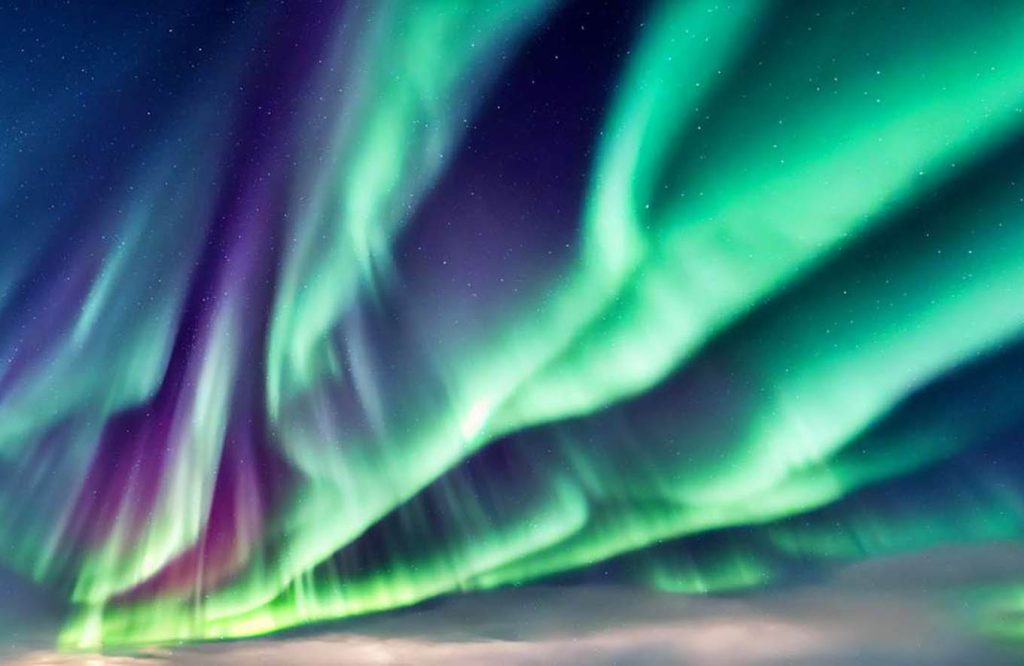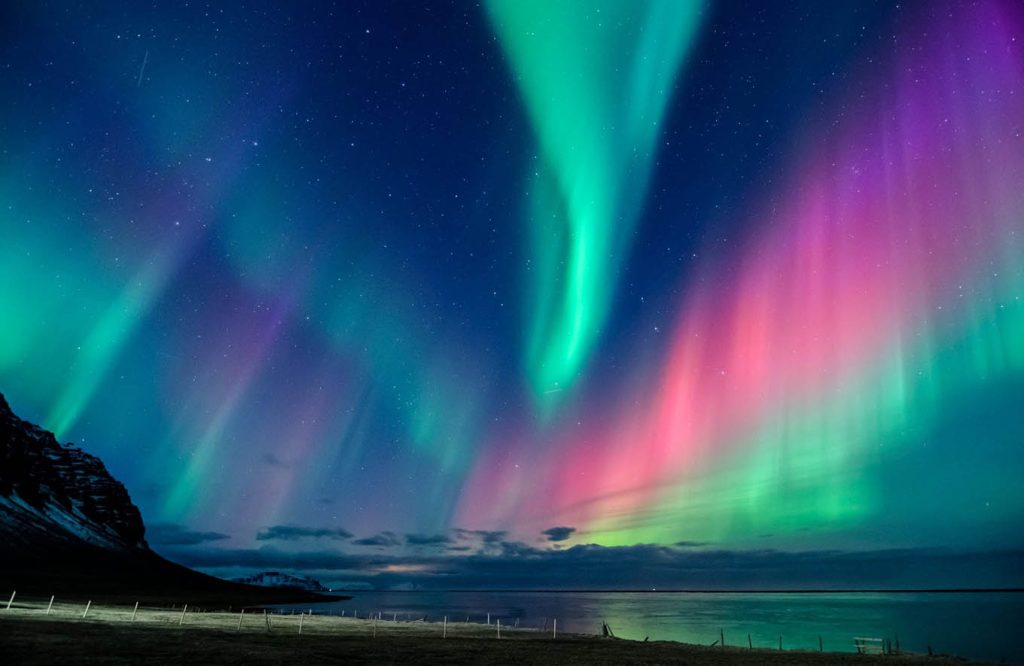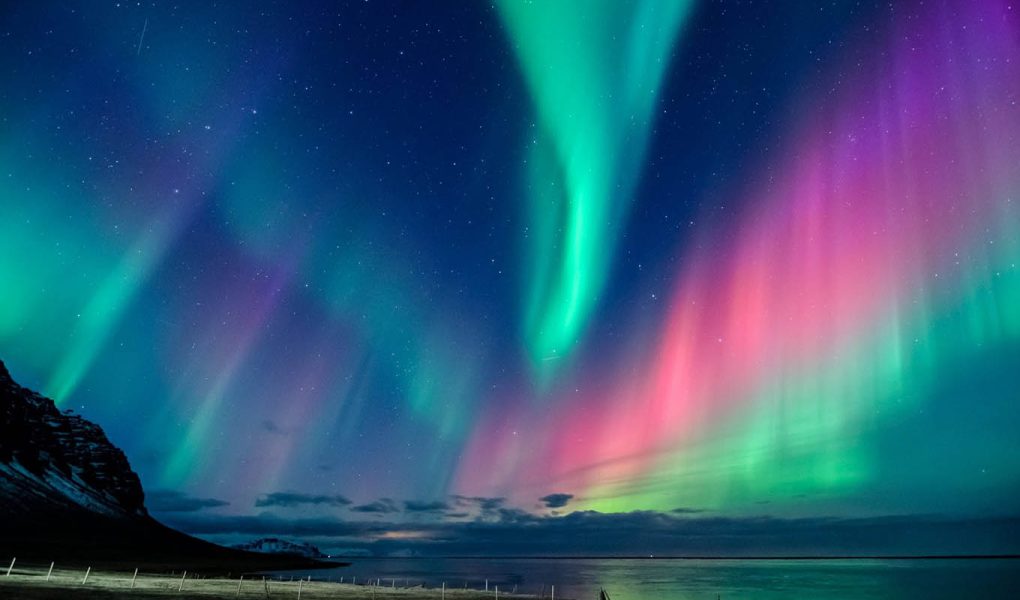Reykjavik, the capital of Iceland, is located near the Arctic Circle and has polar day and polar night phenomena, which makes the city a unique travel destination. Polar day phenomenon means that in summer, there is almost no night, and the sun lingers near the horizon for 24 hours, allowing tourists to carry out various activities during the day and enjoy endless sunshine. However, this long period of sunshine may affect people’s biological clocks, causing sleep problems or fatigue.
In contrast, in winter, polar night phenomenon occurs, when Reykjavik is almost dark all day, the sun is below the horizon, and there are only short days of sunshine during the day. Although this polar night phenomenon increases the opportunity to see the northern lights, the long period of darkness may also lead to depression or loss of vitality.
Therefore, understanding the polar day and polar night phenomenon and arranging travel activities and work and rest time reasonably will help tourists adapt to and make full use of these unique natural phenomena and enjoy the charm of Reykjavik.
1. Overview of polar day and polar night phenomena in Reykjavik
1.1 Polar day phenomenon
The polar day phenomenon in Reykjavik usually occurs from late May to late July each year. At this time, the sun hardly sets below the horizon, and daylight can be seen 24 hours a day. Even at midnight, the sky is still bright, giving people a feeling of “never getting dark”. Although the daytime is extended, sometimes the sun appears near the horizon, showing a soft golden color, but due to the long duration of sunshine, many people will feel that day and night are reversed.

1.2 Polar Night
In contrast to polar day, polar night occurs from mid-November to early February each year. During this period, the sunlight in Reykjavik almost disappears, and the daytime light is very weak, often with only a few hours of twilight. Long periods of darkness and cold weather may affect tourists’ moods, leading to depression or seasonal affective disorder.
2. The impact of polar day and polar night on travel
2.1 Physiological impact
Polar day and polar night have a certain impact on the physiological rhythm of the human body, especially on sleep quality, appetite and energy level. Long-term exposure to polar day may make it difficult for the human body to adapt to continuous light, which will disrupt the normal biological clock. Conversely, polar night may lead to lack of exposure to sunlight, which in turn affects the body’s vitamin D levels.
2.2 Psychological impact
The extreme light conditions of polar day and polar night can have a certain impact on mental health. Polar day may cause insomnia, anxiety or lack of concentration, especially when people cannot adjust their work and rest well. Polar nights can cause depression or seasonal affective disorder, especially when the sun disappears completely. Lack of sunlight can affect mood and lead to fatigue or laziness.
2.3 Impact on travel arrangements
The polar day and polar night phenomena can also affect travel schedules. During the polar day, visitors can engage in activities around the clock and experience more daytime and nighttime attractions. However, the polar night means that the daytime is short and visitors may need to arrange their trips based on the limited natural light. In addition, the aurora viewing activities during the polar night will become a major attraction for tourists.
3. How to deal with the polar day phenomenon
3.1 Adjust your sleep and rest schedule
In order to adapt to the polar day phenomenon in Reykjavik, you first need to adjust your sleep and rest schedule. Try to avoid sleeping in continuous light, as this will affect your body clock. You can try wearing an eye mask or using blackout curtains to block out external light and help you fall asleep. If you really have trouble falling asleep, you can try relaxation techniques such as meditation or deep breathing.
3.2 Adjust your diet and exercise
Diet and exercise also play a very important role in adapting to the polar day phenomenon. Try to eat regularly and avoid excessive intake of caffeine or sugary drinks, which may affect sleep quality. At the same time, proper exercise can help regulate the body clock and increase the body’s energy consumption, thereby improving sleep quality.
3.3 Wear comfortable clothing

The summer temperature in Reykjavik is relatively mild, and the temperature may rise slightly during the day due to continuous sunlight. At this time, it is very important to wear breathable and comfortable clothing, especially when doing outdoor activities. It is recommended to choose clothes suitable for the weather and try to avoid wearing too heavy clothes to avoid discomfort.
4. How to deal with the polar night phenomenon
4.1 Increase light exposure
In order to alleviate the impact of the polar night, it is very important to increase light exposure. Try to go out during the day, even if the sunlight is not strong, you can get some light. Many hotels and cafes provide bright indoor light sources, which is very helpful to alleviate the low light environment.
4.2 Take adequate nutrition and vitamin supplements
Due to the lack of sunlight, the human body may lack vitamin D during the polar night. Therefore, it is particularly important to supplement vitamin D and other nutrients. You can get vitamin D through food (such as fish, dairy products, eggs, etc.), or ask your doctor if you need additional nutritional supplements.
4.3 Keep a positive attitude
Psychologically, the polar night may make people feel depressed or down. It is especially important to keep a positive attitude at this time. Try to participate in local social activities or tourism projects, maintain daily activities, keep in touch with family and friends, and avoid emotional depression.
5. Things to note during travel
5.1 Arrange enough time
The polar day and polar night phenomena in Reykjavik may make people feel uncomfortable, so it is important to arrange enough rest and appropriate activities during the trip. Don’t try to overcrowd the itinerary, and make sure you have enough time to relax and enjoy the journey every day.
5.2 Choose travel activities appropriately
During the polar day, it is recommended to choose activities that can take advantage of all-day light, such as glacier hiking, aurora viewing, hot springs, etc. During the polar night, choose indoor activities appropriately, such as museum visits, cafe gatherings, etc., which can help alleviate the negative effects of lack of light.
5.3 Use travel aids
Travelers may consider using some travel aids, such as blackout curtains, earplugs, eye masks, etc. to help with sleep. In addition, adequate sleep will help restore your physical strength and allow you to better adapt to the polar day and polar night in Reykjavik.
5.4 Choose the right place to stay

In Reykjavik, it is also important to choose a place to stay that is suitable for the polar day and polar night phenomenon. Many hotels and B&Bs offer special blackout curtains to help guests overcome the problem of too long or too short daylight. Make sure the place you book provides a comfortable resting environment to avoid indoor light interfering with sleep. Choose a place with a good location that is convenient for daytime or nighttime activities and also provides the necessary quiet and relaxation space.
5.5 Maintain a regular diet
Eating habits play a vital role in the polar day and polar night phenomenon in Reykjavik. During the polar day, despite the long light hours, many people will ignore their eating habits and easily suffer from loss of appetite or unstable food intake. Maintaining a balanced diet and properly allocating three meals a day is essential for regulating the body clock.
During the polar night, although the sun’s rays are scarce, maintaining a regular diet can help improve mood and avoid feeling tired or depressed. It is recommended to eat more foods rich in vitamin D and Omega-3 fatty acids, such as fish and nuts, to make up for the lack of sunlight.
5.6 Interact with locals and integrate into the culture
Interacting with local residents and understanding Icelandic culture is also an important way to adapt to the polar day and night phenomenon in Reykjavik. Icelanders are generally very friendly and happy to share their lifestyle and experience of dealing with the polar day and night.
Joining local social activities or tour groups can not only help you better integrate into the environment, but also help you pass the time by interacting with others and reduce the loneliness or fatigue caused by the polar night. At the same time, by understanding the local culture and customs, you can better adjust your mentality and deal with the unique natural phenomena in Reykjavik in a positive way.
Reykjavik’s polar day and polar night phenomena are a major feature of the city. Although they may bring some difficulties in adaptation, travelers can still spend an unforgettable time here through reasonable adjustments and responses. Whether facing the long days in summer or the dark nights in winter, as long as you take appropriate measures, you will be able to fully enjoy the natural beauty and unique charm of Reykjavik.



